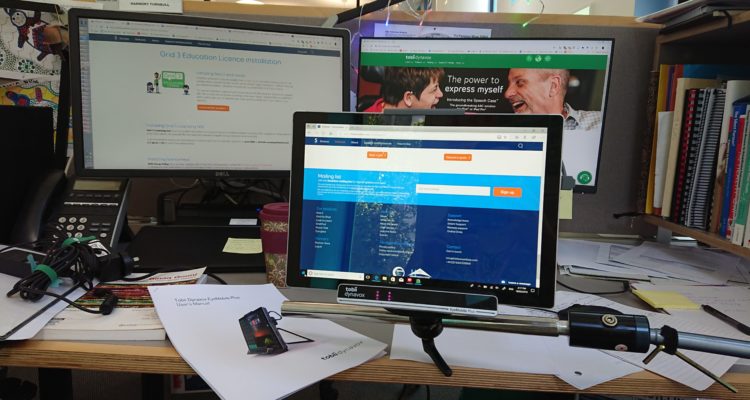The importance of access to information
We are fortunate to live in an age where information is at our fingertips almost constantly. Many people can now reach out to a piece of technology (a computer, smart phone, even their smart fridge!) and find information on just about anything (What will be the temperature today? Where is my nearest supermarket? When will my bus arrive?).

Personally, I have become very comfortable with the ease of asking my smart phone any kind of question (I can type it or speak it) to get multiple answers in less than a second, and I love my internet browser extension that means I can instantly search Google Scholar for articles related to a thought I just had. Even though I didn’t grow up with anything close to these kinds of information technologies (my family didn’t own a VCR machine until I was in high school), I find these tools for accessing information seamlessly woven into my life, and I love it.
Perhaps for other people these kinds of tools are not as prominent in their lives, but we all enjoy access to more information than ever before.
The way that information is presented can make a big difference to how well we can understand that information.
The concept of “access” is often applied to physical access to resources such as transport, documents, buildings and locations, educational and online environments but information access is often overlooked. Information access is just as important as physical access. Imagine that your favourite restaurant is easy to get to, easy to enter, plenty of space to sit at a table, you receive a copy of the menu, but you can’t order the food you want because you can’t understand the information in the menu. Access to information is often the last accessibility consideration, but it is just as important as physical access.
In support of information access, Article 19 of the Universal Declaration of Human Rights (UDHR) relates to freedom of expression, but it also relates to the right to “seek and receive” information. This means that we all have the right to seek out information and be provided with the information we need. Article 19 is often used in relation to accessing information from governments for accountability and transparency and personal information from health providers. For people with disabilities, the UN Convention on the Rights of Persons with Disabilities (CRPD) provides additional support in relation to accessing information in ways that help people to understand through Article 21. Article 21 of the CRPD supports the provision of information in accessible formats appropriate to the needs of people with disabilities.
Universal Declaration of Human Rights Article 19: Everyone has the right to freedom of opinion and expression; this right includes freedom to hold opinions without interference and to seek, receive and impart information and ideas through any media and regardless of frontiers.
UN Convention on the Rights of Persons with Disabilities Article 21: Freedom of expression and opinion, and access to information. States Parties shall take all appropriate measures to ensure that persons with disabilities can exercise the right to freedom of expression and opinion, including the freedom to seek, receive and impart information and ideas on an equal basis with others and through all forms of communication of their choice, as defined in article 2 of the present Convention, including by:
a) Providing information intended for the general public to persons with disabilities in accessible formats and technologies appropriate to different kinds of disabilities in a timely manner and without additional cost;
b) Accepting and facilitating the use of sign languages, Braille, augmentative and alternative communication, and all other accessible means, modes and formats of communication of their choice by persons with disabilities in official interactions;
c) Urging private entities that provide services to the general public, including through the Internet, to provide information and services in accessible and usable formats for persons with disabilities;
d) Encouraging the mass media, including providers of information through the Internet, to make their services accessible to persons with disabilities;
e) Recognizing and promoting the use of sign languages.
